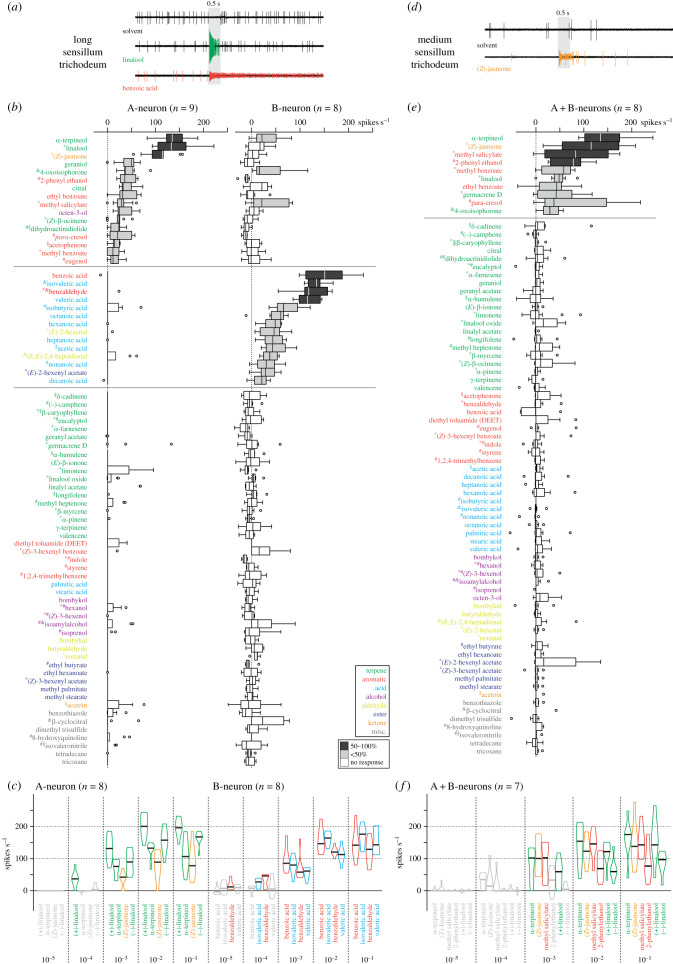Figure 1.
Response profile of female sensilla trichodea. (a) Example recordings from long sensillum trichodeum stimulated with the solvent hexane, (±)-linalool (green, large spikes, A-neuron) and benzoic acid (red, small spikes, B-neuron); diluted 10−2 in hexane; grey background, odour exposure. (b) Responses of A-neurons (left) and B-neurons (right) in long trichoids. Boxplots, net, solvent-subtracted maximum spike frequencies; filled boxplots, data differ from zero (p < 0.05, Wilcoxon rank sum test); shades of grey, strength of response (dark grey, ≥half maximal response; light grey, <half maximal response). Stimuli sorted according to median response first in A-neurons, then in B-neurons; stimuli eliciting no response in either neuron sorted alphabetically according to chemical class. Symbols next to odour names, presence in headspace from mulberry leaves (*), silkmoths (§), their meconium (#), or silkworm faeces (&); for chemical composition of headspaces see electronic supplementary material, figure S1. (c) Dose–response experiments with best ligands of long trichoids; violin plots, net maximum spike frequencies (no. spikes s−1) to five (v/v) odour concentrations corresponding to 60 ng, 600 ng, 6 µg, 60 µg, 600 µg of pure substance on filter paper; horizontal line, median; grey violin plots, data not different from zero (p > 0.05, Wilcoxon rank sum test). (d) Example recordings from medium sensillum trichodeum upon stimulation with hexane and (Z)-jasmone (orange, A + B-neurons). (e) Pooled responses of A + B-neurons in medium trichoids. (f) Dose–response experiments with best ligands of medium trichoids and both enantiomers of linalool.

